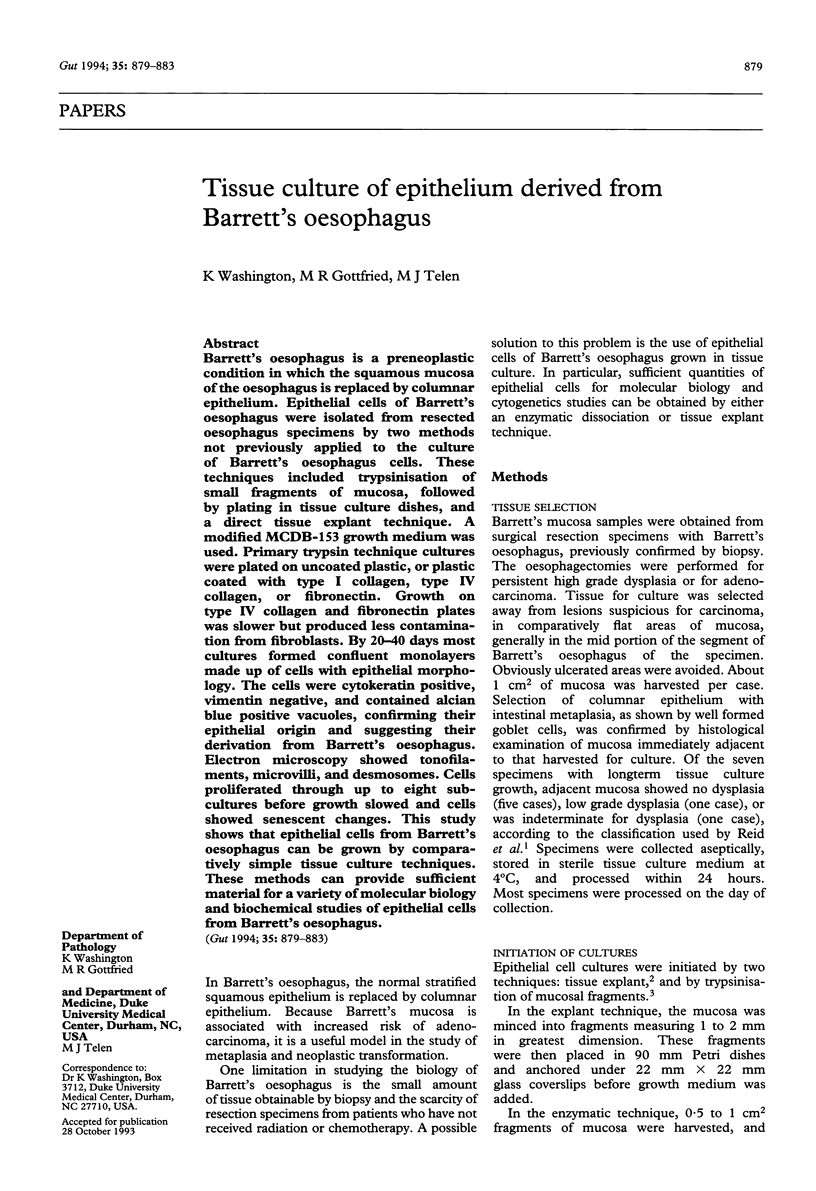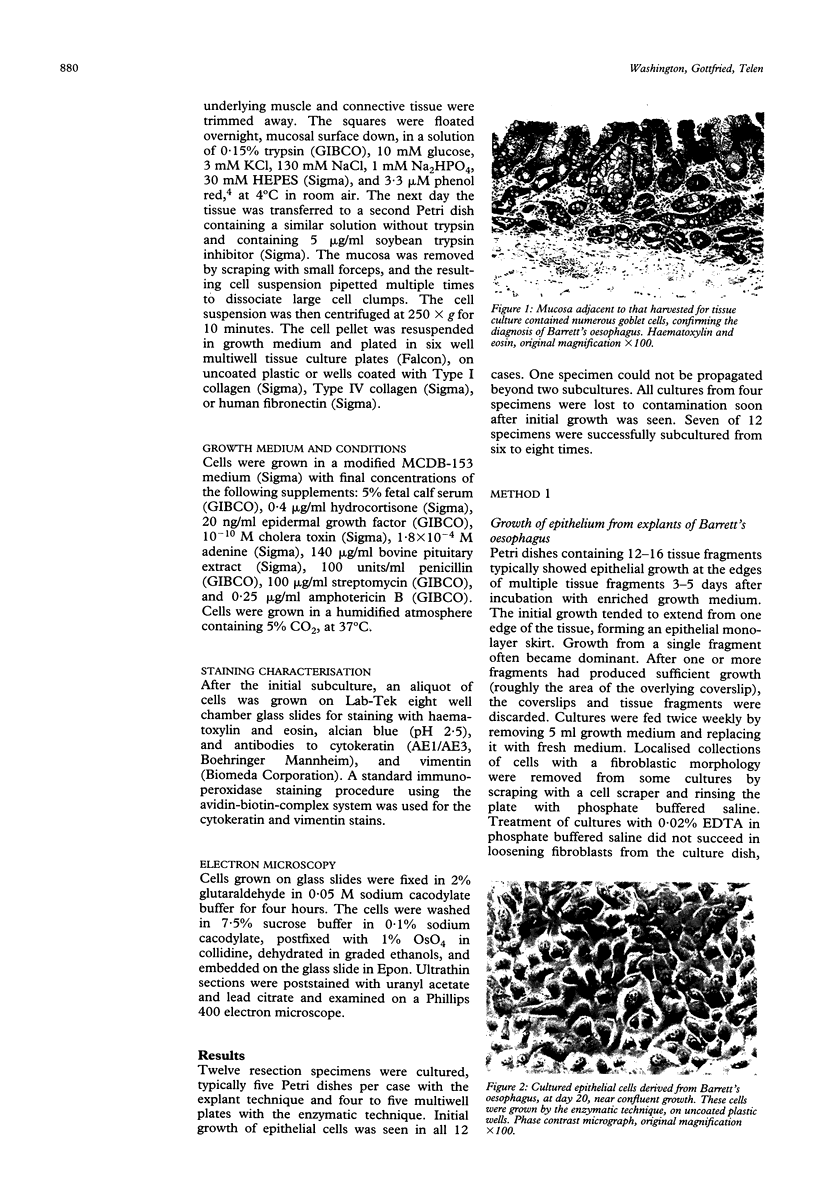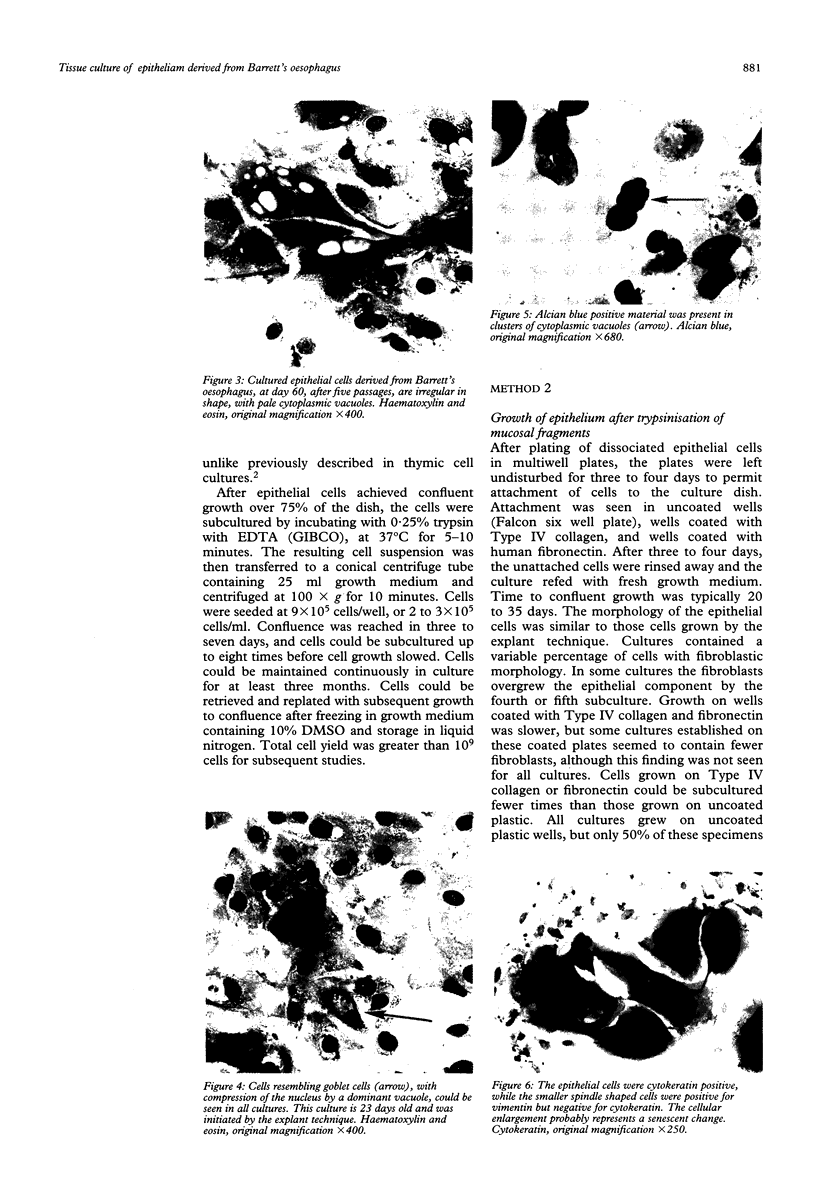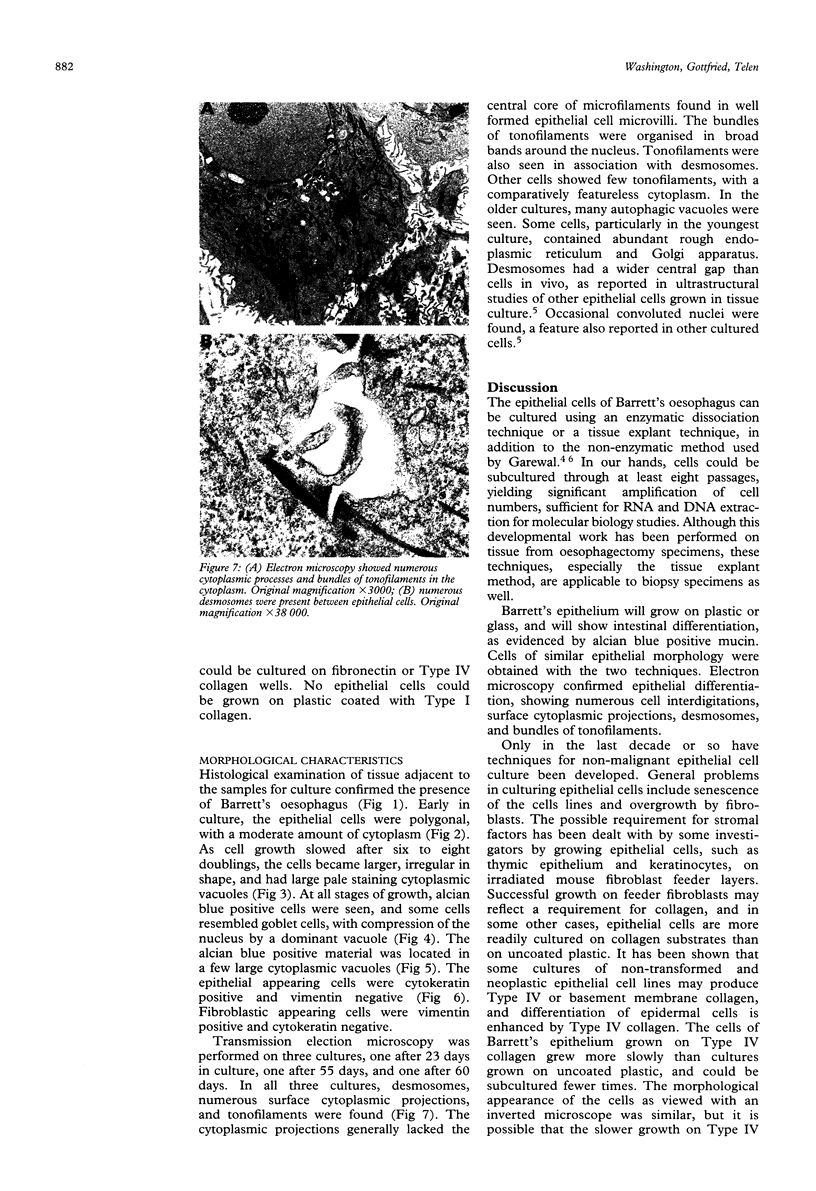Abstract
Barrett's oesophagus is a preneoplastic condition in which the squamous mucosa of the oesophagus is replaced by columnar epithelium. Epithelial cells of Barrett's oesophagus were isolated from resected oesophagus specimens by two methods not previously applied to the culture of Barrett's oesophagus cells. These techniques included trypsinisation of small fragments of mucosa, followed by plating in tissue culture dishes, and a direct tissue explant technique. A modified MCDB-153 growth medium was used. Primary trypsin technique cultures were plated on uncoated plastic, or plastic coated with type I collagen, type IV collagen, or fibronectin. Growth on type IV collagen and fibronectin plates was slower but produced less contamination from fibroblasts. By 20-40 days most cultures formed confluent monolayers made up of cells with epithelial morphology. The cells were cytokeratin positive, vimentin negative, and contained alcian blue positive vacuoles, confirming their epithelial origin and suggesting their derivation from Barrett's oesophagus. Electron microscopy showed tonofilaments, microvilli, and desmosomes. Cells proliferated through up to eight subcultures before growth slowed and cells showed senescent changes. This study shows that epithelial cells from Barrett's oesophagus can be grown by comparatively simple tissue culture techniques. These methods can provide sufficient material for a variety of molecular biology and biochemical studies of epithelial cells from Barrett's oesophagus.
Full text
PDF




Images in this article
Selected References
These references are in PubMed. This may not be the complete list of references from this article.
- Franks L. M., Wilson P. D. Origin and ultrastructure of cells in vitro. Int Rev Cytol. 1977;48:55–139. doi: 10.1016/s0074-7696(08)61743-x. [DOI] [PubMed] [Google Scholar]
- Garewal H. S., Gerner E. W., Sampliner R. E., Roe D. Ornithine decarboxylase and polyamine levels in columnar upper gastrointestinal mucosae in patients with Barrett's esophagus. Cancer Res. 1988 Jun 1;48(11):3288–3291. [PubMed] [Google Scholar]
- Garewal H. S., Leibovitz A., Sampliner R. E., Ramsey L., Hendrix M. J., Sloan D. Tissue culture of epithelial cells from esophageal specialized columnar epithelium (Barrett's esophagus). Dig Dis Sci. 1992 Apr;37(4):532–536. doi: 10.1007/BF01307576. [DOI] [PubMed] [Google Scholar]
- Hoerl B. J., Vroman B. T., Kasperbauer J. L., LaRusso N. F., Scott R. E. Biological characteristics of primary cultures of human gallbladder epithelial cells. Lab Invest. 1992 Feb;66(2):243–250. [PubMed] [Google Scholar]
- Reid B. J., Haggitt R. C., Rubin C. E., Roth G., Surawicz C. M., Van Belle G., Lewin K., Weinstein W. M., Antonioli D. A., Goldman H. Observer variation in the diagnosis of dysplasia in Barrett's esophagus. Hum Pathol. 1988 Feb;19(2):166–178. doi: 10.1016/s0046-8177(88)80344-7. [DOI] [PubMed] [Google Scholar]
- Singer K. H., Harden E. A., Robertson A. L., Lobach D. F., Haynes B. F. In vitro growth and phenotypic characterization of mesodermal-derived and epithelial components of normal and abnormal human thymus. Hum Immunol. 1985 Jul;13(3):161–176. doi: 10.1016/0198-8859(85)90009-6. [DOI] [PubMed] [Google Scholar]
- Tsao M. C., Walthall B. J., Ham R. G. Clonal growth of normal human epidermal keratinocytes in a defined medium. J Cell Physiol. 1982 Feb;110(2):219–229. doi: 10.1002/jcp.1041100217. [DOI] [PubMed] [Google Scholar]









